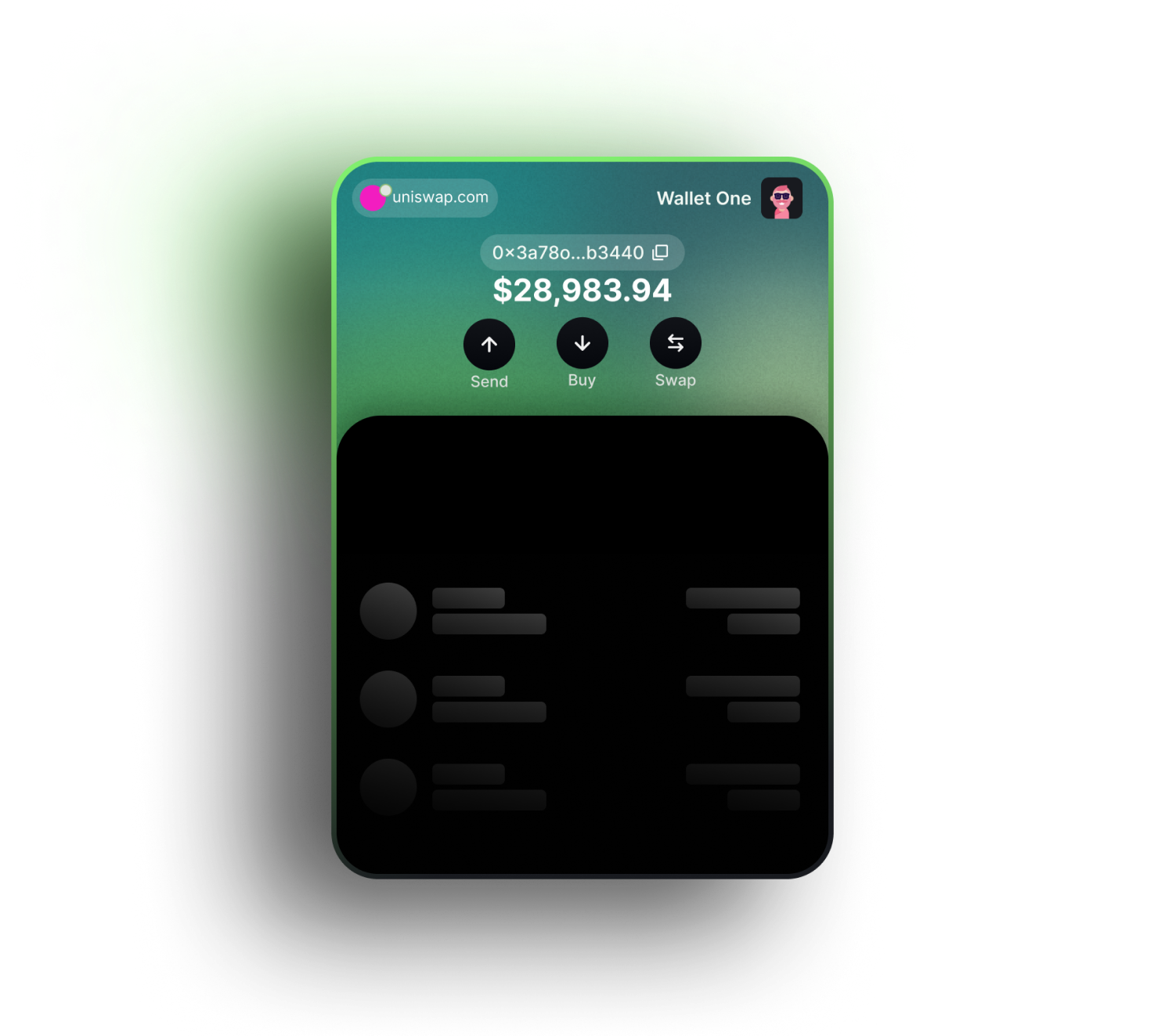Easy way to Buy  Graph(GRT) Online with Wigwam crypto app
Graph(GRT) Online with Wigwam crypto app
Download Extension
How to buy and hold GRT with Wigwam
1. Choose a token number that you want to buy
2. Create a wallet, where to store your crypto
3. Pay with credit card
4. Check your crypto in the created wallet
Why Wigwam is the best crypto wallet for Graph (GRT) storage
Ultimate security, only you have access to your Graph tokens
Send, Receive, Store your Graph tokens free and without limitations
Check the real-time value of your crypto tokens
Buy, Sell, Exchange Graph (GRT) directly in the wallet
Stake Graph (GRT) by connecting Wigwam to the popular DeFi dApps
No KYC or personal data collected

The Graph (GRT) Token
Founded in 2018 by Yaniv Tal, Jannis Pohlmann, and Brandon Ramirez, Graph is an indexing protocol aiming at facilitating data querying from blockchains. It has a huge community throughout the globe with more than 200 Indexer Nodes in testnet and 2000+ curators in the curator program.
About GRT token
GRT, being an ERC-20 token on the Ethereum blockchain, is the native token of Graph which is utilized to allocate resources in the network. Though built on the Ethereum blockchain, Graph can index data on multiple chains such as NEAR, Cosmos, Avalanche, Arbitrum, Optimism, and Polygon.
The Graph network is a decentralized protocol used for indexing, querying, and organizing blockchain data. Applications can get network-indexed data by using GraphQL programming language to query open APIs known as subgraphs. The Graph’s hosted service handled 20 billion requests in April 2021.
Active Indexers, Curators and Delegators are the service providers to the Graph network. Indexers are rewarded with query fees and indexing rewards whereas Curators earn a percentage of query fees for the subgraphs they report on. However, delegators are subjected to the percentage of the pay collected by the Indexer they delegate to.
GRT Token Use Cases
Indexer Staking: Delegators can stake GRT to Indexer to provide economic security to the network and to earn a percentage of Indexer's query fees and rewards.
Curator Signaling: Curators add GRT tokens into the bonding curve for predicting the subgraphs that would be indexed. In return, they will earn a part of the query fees that the subgraph generates in future.
Grants: Participants who contribute towards the growth of The Graph ecosystem will be rewarded with grants in GRT.
Governance: The token holders can take part in governance decisions for the development of Graph protocol.
Economic Value
The circulating supply of GRT is approximately 9.3 billion tokens with a total supply of around 10.7 billion tokens. The market capitalization of the Graph token is $1.6 billion, retaining it in the top 50 cryptocurrencies in terms of USD. From its all-time high worth of $5.7 billion in November 2021, it has dropped by over 70%.
GRT token distribution:
- Early Team and Advisor- 23.24%
- GRT Sale- 6.01%
- Early Backers- 16.52%
- Edge & Node- 8.25%
- Graph Foundation- 20%
- Backers- 17.32%
- Curator Program Grant- 2.99%
- Education Program & Bug Bounty- 2.67%
- Testnet Indexer Rewards- 3%
From 2023 onwards, the Graph price has tripled- surpassing the bullish Bitcoin (BTC). Approximately, more than $30 million worth of GRT was paid to indexers and delegators in 2023. With all these numbers, it is ensured that it will run on reliable public infrastructure for the long term.
Though it is susceptible to future technical governance, the yearly GRT issuance rate began at 3%. Along with 1% of all protocol query fees, which are also subject to future technological regulation, the Graph burns the withdrawal tax that curators are charged. This indicates that the volume of requests The Graph processes will determine whether GRT is an inflationary or deflationary asset in the future.
Challenges
GRT token is an ERC-20 token; thus, these are associated with risks such as smart contract vulnerabilities and network congestion. Moreover, these tokens are volatile and are not backed by physical assets.
Furthermore, understanding and utilizing subgraphs is a bit of a complex process; thus, may bother the new developers to enter the network. In addition to this, the continuously evolving nature of blockchain technology may make the solutions less effective.
Considering all these risks, it is advised to go through deep research before investing in GRT tokens.
Disclaimer
This article is for informational purposes only and should not be interpreted as financial or investment advice. The views expressed herein represent solely the opinion of the author and are not intended to provide specific trading or investment recommendations. We do not guarantee the accuracy, completeness, or reliability of the information contained in this article. The cryptocurrency market is known for its high volatility and unpredictable fluctuations. Investors, traders, and anyone engaging with cryptocurrency are advised to conduct thorough research, consider a variety of perspectives, and acquaint themselves with applicable local regulations prior to making any investment decisions.
FAQ
You can purchase the GRT token direcrtly in the Wigwam crypto wallet or from popular cryptocurrency exchanges such as Kraken, Binance, KuCoin, HTX, and many more.
Yes, GRT tokens can be staked to earn a percentage of the Indexer's query fees and rewards and also to provide economic security to the network.
Visit Etherscan Explorer and enter your wallet address in the search bar to view the activities.
To add a GRT token to the crypto wallet, follow the below-defined steps:
Open your crypto wallet, Navigate to “Manage Assets”, and then click on “Add Token” and then enter the COMP token details as follows:
- Token Contract Address for GRT: 0xc944E90C64B2c07662A292be6244BDf05Cda44a7
- Token Symbol: GRT
- Decimal Precision: With 18 Decimals
As the GRT token is an ERC-20 token; therefore, these are subjected to the risks associated with smart contract vulnerabilities and network congestion. Moreover, these tokens are not backed by physical assets.





